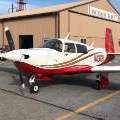Taking Mooney for a Spin (poll)
Spinning Mooneys
192 members have voted
-
Members Online
- Rmfriday
- Hank
- Jim F
- Texjhawk
- MikeOH
- ElkoRandy20J
- Meshach
- ProtoFly
- Deb
- redbaron1982
- prillayo03
- midlifeflyer
- BrentS
- Schllc
- Lois
- varlajo
- Todd1
- navysix
- Griswold
- Bolter
- jjsk784
- Guy123
- eman1200
- TheAv8r
- jetdriven
- 201er
- takair
- FoxMike
- TCC
- Utah20Gflyer
- Shrobby
- UteM20F
- ohdub
- FlyingDude
- Jetpilot86
- 00-Negative
- kaba
- thomas1142
- Buckeyechuck
- neilpilot
- Echo
- slowflyin
- stevesm20b
- bigmo
- N201MKTurbo
- phrogpilot73
- KSMooniac


Recommended Posts
Join the conversation
You can post now and register later. If you have an account, sign in now to post with your account.